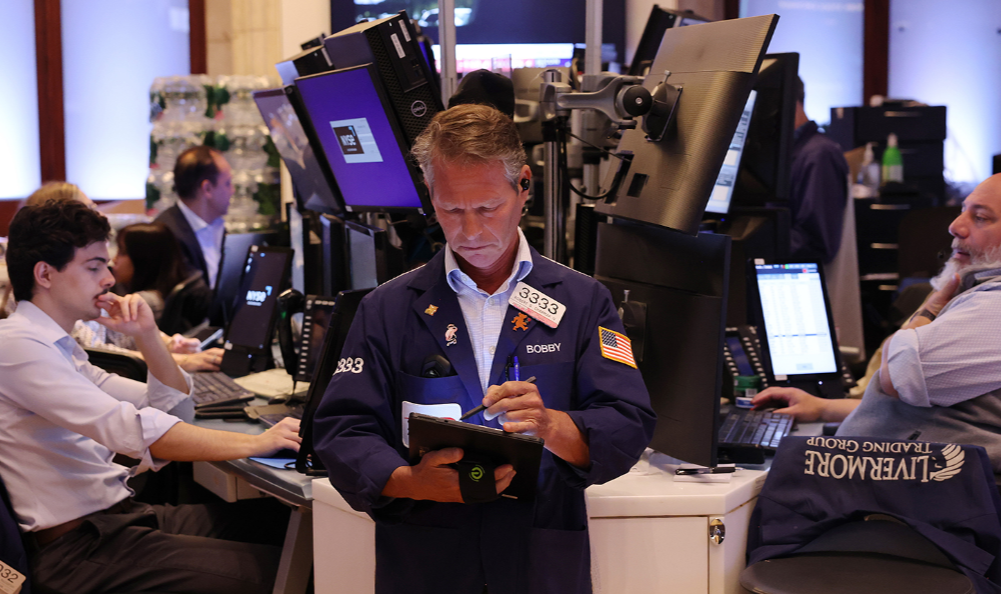Wall Street stocks closed slightly lower on Friday after a volatile trading session in reaction to the Latest U.S. Jobs Report, which is stronger than expected.
According to the Labor Department’s May Jobs Report, the U.S. economy generated approximately 272,000 jobs, significantly exceeding analysts’ forecast of 185,000.
Despite this positive development, the unemployment rate edged up to 4%. The robust figures from the U.S. Jobs Report have raised concerns among investors that the Federal Reserve might delay cutting interest rates longer than anticipated.
Workers Rejoice as Pay Rises and Hiring Remains Strong, but Fed’s Inflation Battle Continues
Strong U.S Jobs Report
Workers can celebrate rising wages and robust hiring across various sectors, but the Federal Reserve may still see its fight against inflation as far from over. The latest US Jobs Report reveals that the economy added 272,000 jobs in May, surpassing the forecasted 190,000, bringing positive news for workers but complicating the Fed’s inflation strategy.
Employment Data and Market Reactions
Published on Friday by the Bureau of Labor Statistics, the May Jobs Report counters recent signs of a slowing job market. According to a Dow Jones survey, economists expected the economy to add 190,000 jobs. Despite the higher-than-anticipated job gains, the unemployment rate edged up to 4%, maintaining a historically low level.
“A long-feared substantial slowdown in hiring has yet to show up,” noted Bankrate Senior Economic Analyst Mark Hamrick.
Wages and Inflation
Average hourly earnings increased by 4.1% in May, up from a 3.9% annual rate in April, providing a bright spot for workers. However, this strong job and wage growth reinforces expectations that the Federal Reserve will hold off on cutting interest rates in its upcoming meeting.
“Fed members and investors had clearly been hoping for a softer report, which would have raised confidence in the appropriateness of a July or September rate cut,” commented ZipRecruiter Chief Economist Julia Pollak.
Economic Data and Fed Decisions
The central bank’s next decision on interest rates is due Wednesday afternoon, following a new Consumer Price Index report that will offer another snapshot of inflation. Despite the strong hiring numbers in May, overall job growth this year has been cooling, trending towards pre-pandemic levels rather than indicating an imminent recession.
Hiring Trends and Market Conditions
Payroll processor ADP reported that private employers added just 152,000 jobs in May, fewer than expected. Additionally, the BLS noted that the ratio of unemployed workers to job openings has returned to pre-pandemic levels, mainly due to firms reducing their hiring needs rather than a surge in unemployment.
“Businesses are just not laying off many workers,” said Mark Zandi, chief economist at Moody’s Analytics. “There’s still underlying job growth,” despite companies cutting back on hiring, hours, and temporary work.
Inflation and Wage Growth
The U.S. economy remains on firm footing, but uncertainty persists about how long rapid price growth will continue. Although inflation has slowed since peaking above 9% in summer 2022, it has hovered above 3% this year, still higher than the Fed’s 2% target. Economists suggest that a slower pace of job growth could further cool inflation as employers ease up on raising pay, leading to reduced spending and slower price increases.
Job Market Stabilization
The BLS reported that the rate of workers quitting has held steady for six months, indicating that the “great resignation” is largely over, replaced by the “great stay.” This stabilization suggests a return to more normal job market conditions.
Sector-Specific Hiring
Friday’s report showed job gains in various sectors, including health care, government, leisure and hospitality, and professional services, which includes many tech roles. Hiring for middle- and high-income workers has slowed, while lower-paid workers continue to be hired at a healthy rate.
Applicant Trends
LinkedIn data shows that although hiring rates are down 10% year-over-year, they have improved compared to earlier in 2023. However, job search competition remains stiff, with a 14% increase in job applications per applicant from November 2023 to March 2024.
“If you’re a high-wage worker right now and you’re sitting on the sidelines, the job search may take some time,” said Fiona Grieg, global head of investor research and policy at Vanguard.
Houston resident Tre Gripper, 32, shared his experience of applying for 463 roles since being laid off in June 2023. His story went viral, bringing new opportunities and highlighting the challenges faced by job seekers.
Conclusion
The May US Jobs Report highlights the resilience of the U.S. job market and the ongoing challenges in the Federal Reserve’s fight against inflation. With strong hiring and rising wages, the economy remains robust, but the path to achieving stable inflation continues to be complex and uncertain.


